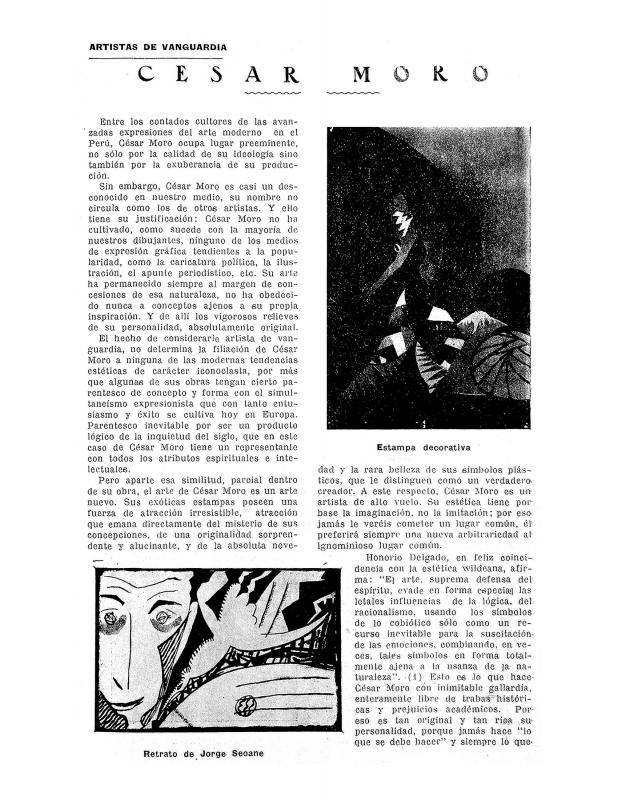Poet and visual artist César Moro (Alfredo Quízpez Asín) returned to Peru at the end of 1933 after having lived in Paris for eight years, where he participated in the Surrealist movement. In May 1935, Moro and Chilean artist María Valencia organized the first show of Surrealism in Latin America, specifically at Sala Alcedo in Lima. The belligerence of the works, and their radical language, was cause for curiosity as well as controversy among viewers; the coverage of the show in the conservative local press was limited. Furthermore, Lima was embroiled in political debate pursuant to the assassination of Mr. and Mrs. Miró Quesada Laos, owners of the influential newspaper El Comercio, the same month the show was held. One of the few substantial articles on the exhibition that did appear was published in Cascabel, a liberal weekly directed by Federico More and his brothers, Ernesto and Carlos. The Mores had been critical of the reigning Indianist movement and supported certain forms of avant-garde expression; it is likely that they had met Moro in Europe—where they came into direct contact with avant-garde art—sometime between 1926 and 1928. The same year as the Surrealist exhibition, Ernesto wrote an extensive article on Moro’s work at the Museo Artístico of the Hospital Mental de la Magdalena (currently the Víctor Larco Herrera mental hospital), which included statements made by the Peruvian poet against José Sabogal’s performance as the director of the Escuela Nacional de Bellas Artes (ENBA). One year later, Moro’s solo show was reviewed in Cascabel by R. T. (possibly Ricardo Tenaud, who worked with Moro at the journal El uso de la palabra published in 1938). The longest review of the show was written by Carlos Raygada, an influential local critic and lifelong friend of the poet. [See in the ICAA digital archive by Raygada “Artistas de vanguardia: César Moro” (doc. no. 1146756)]. Despite those articles, Moro’s art was still marginal on an art scene dominated by the nationalist rhetoric of Indianism. Like his countryman César Vallejo, Moro’s leftist politics led him to organize a campaign in favor of the Second Spanish Republic, which was considered subversive by General Óscar Benavides’s administration. After the publication of the first and only issue of El uso de la palabra in 1938, Moro sought exile in Mexico, where he played an essential role in the organization of the International Surrealist Exhibition (1940).
[For additional information, see Ricardo Tenaud’s “Exposición César Moro” (doc. no. 1293639)].


